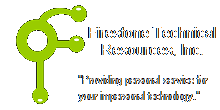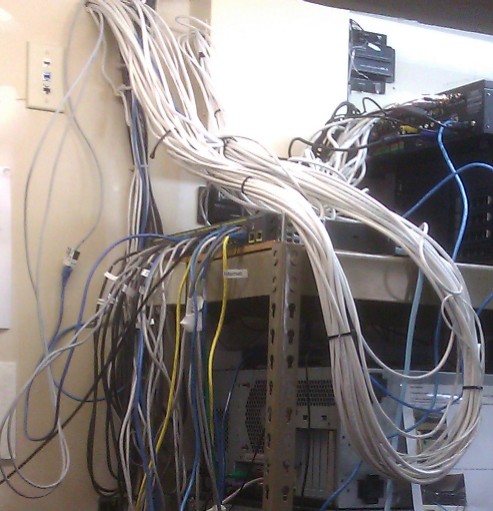 Firestone Technical Resources, Inc
Providing personal service for your impersonal technology.
Firestone Technical Resources, Inc
Providing personal service for your impersonal technology.
News Articles
Cat5e Data Cabling Recomendations
Frequently we are called to a new client because of network performance or stability issues. These cases manifest themselves over time by inexperienced data cabling installers, typically the business owner or one of the employees, who attempted to save some money by doing the work themselves.
The installation of data cabling, also referred to as structured cabling, is almost as much an art form as it is a time tested trade that can most effectively be perfected through the training by one with years of experience and formal training in the field.

There is an official standard established by the Telecommunications Industry Association and reviewed by IEEE for end-to-end data cabling of a data or voice network. Data cabling standards change as the development of better cable and connectors are made available. For many companies, using the Category 5e standard is more than sufficient for ordinary business use. In situations where more demanding performance is required, an organization might decide to pay the addition cost and follow the Category 6 standard.
Here are some basic technical recommendations that should be followed for any data cabling installation.
- Cabling should not be subjected to a pulling tension of more than 25 pounds.
- When terminating Cat5e or better cables be sure the natural twist of each pair of is carried through as close to the point of termination. ANSI/TIA 568-C.2 requires no more than 0.5 inch untwisted pair length for Cat5e as it will affect performance at higher bit rates.
- Cables should be secured and placed in a manner which reduces excess line noise from electrical lines, prevents kinking, and tight cinching. Velcro is a preferred method of securing cables since it is less likely to be over cinched and provides a broader surface area to prevent kinking.
- Cable lengths from user equipment to communication hardware should not exceed 100m.
- Cabling trays are often recommended for long runs of horizontal structured cabling and can extend the life of the cable because of the consistent support from end to end.
Allowing an experienced data/telecom cable installer to perform your installation work will often provide better value for your cabling investment by ensuring the standards are met, cables are tested for accuracy and reliability, ensure better performance, and will often ensure the cabling last longer.
If you are in need of small cabling installation of 48 locations, please contact us. If you have larger cabling installation, please let us know and we will refer you to one of our cabling installation partners that would be glad to ensure your project is completed according to industry standards.
We hope that this information is helpful. Please let us know how this has helped you or if you have additional questions. As always Firestone Technical Resources, Inc. is here to help with your computer support issues - "Providing personal service for your impersonal technology."
Comments